1. Horse meat
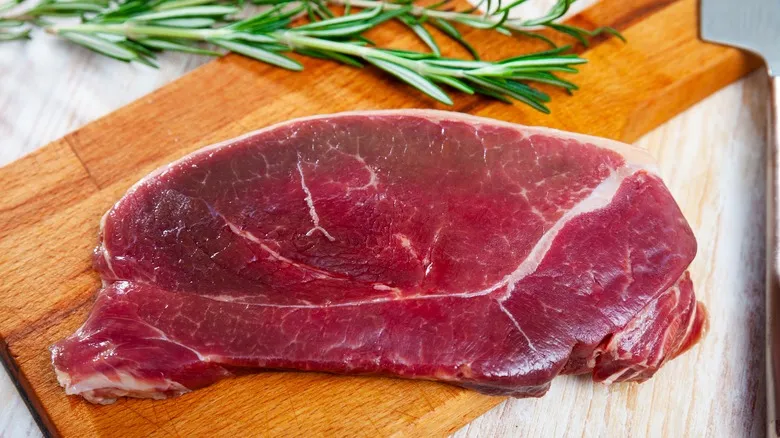
If you were born and raised in the U.S., you might be surprised to learn that horse meat is quite popular in various other countries. In places like France, Russia, Japan, and Italy, you can find horse meat available in butcher shops and restaurants. It's even present in Canada, particularly in the French-speaking province of Quebec and certain areas of Toronto.
Known as chevaline, horse meat is lean, rich in essential fatty acids, and contains nearly twice the iron found in beef. Some people claim that horse meat tastes just like beef, while others describe it as having a slightly sweeter flavor. The only way to discover its taste for yourself is to travel outside the U.S.
Horse meat has always been a controversial subject in the United States. It never gained popularity as a meal option, although slaughterhouses used to process it for export. This changed in 2007 when Congress ceased funding for U.S. Department of Agriculture inspections of horse slaughterhouses, leading to their decline. While consuming horse meat is not illegal at the federal level, several states have enacted laws prohibiting its sale for human consumption.
2. Wild abalone
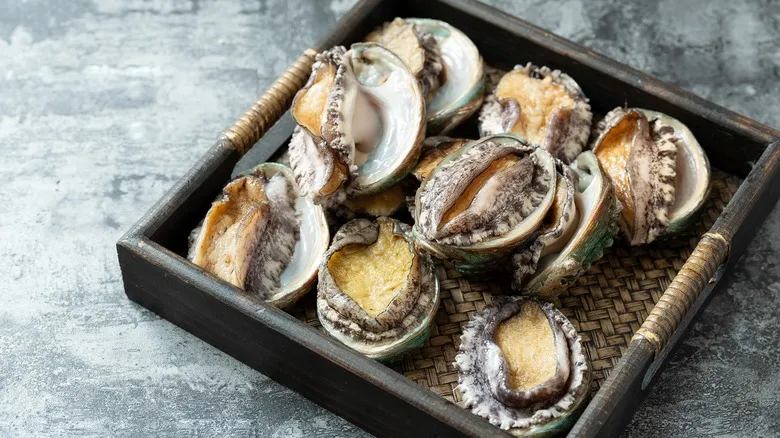
What is abalone, and how is it consumed? These are important questions, especially since abalone is quite rare in the United States. Abalone is a type of gastropod mollusk, commonly referred to as a sea snail. It inhabits the coastal regions of Australia, New Zealand, Japan, South Africa, and western North America. The mollusk features a flat shell adorned with a spiral design on the exterior and a lustrous, pearl-like interior. However, it’s not the shell that contributes to abalone's popularity; it’s the rich, savory meat that makes it a highly coveted and expensive delicacy.
Historically, millions of abalone thrived along California's coast. Archaeological evidence indicates that indigenous peoples have been consuming abalone for at least 7,400 years. Unfortunately, overfishing, disease, and environmental changes have pushed these mollusks to the edge of extinction in the United States. Of the eight native species found in California, two are now classified as endangered. Since 1997, commercial fishing for abalone has been prohibited, and in 2017, sport fishing was also banned. Currently, the only legally available abalone in the United States is red abalone sourced from certified aquaculture farms.
3. Owl meat

With their impressive wingspans and glowing eyes that seem capable of peering into a person's very essence, owls have long been significant figures in folklore and mythology. However, despite the intrigue they inspire, these remarkable birds have historically found their way into cooking pots across North America. Some indigenous tribes would boil and roast them for food. Ornithologist John James Audubon noted in his 19th-century work "Birds of America" that owls were even included in certain gumbo recipes in Louisiana.
In contemporary times, capturing, killing, trading, transporting, or selling an owl can result in substantial fines and imprisonment. This is due to the Migratory Bird Treaty Act of 1918, established to safeguard birds native to the United States. While not all owls are migratory, every species is protected under this legislation, which encompasses the birds themselves, their eggs, and their nests. In fact, possessing an owl feather in the U.S. is illegal without a special permit for scientific research or a native religious ceremony. The U.S. Fish & Wildlife Service emphasizes that the law "applies to all feathers, regardless of how they were acquired."
4. Sea turtle meat

It would be a significant understatement to claim that turtle meat was once a popular food in the United States. From the era of the founding fathers onward, turtle soup was considered a highly coveted delicacy. It was a favorite among presidents like George Washington and William Howard Taft, and it was a common feature at upscale dining establishments. People often hosted "turtle frolics" to enjoy the dish in large gatherings, and recipes for the soup were widely circulated. During the Great Depression, turtle meat was also consumed, with some referring to it as "Hoover chicken" in tribute to President Herbert Hoover.
Unsurprisingly, the demand for turtle meat resulted in a swift decline in turtle populations throughout the United States. The Endangered Species Act was enacted in 1973, and it wasn't long before several turtle species were listed as endangered. Today, it is a federal offense to consume any type of sea turtle meat or eggs. In certain states, it is also illegal to eat terrapin meat, which was once a primary ingredient in turtle soup. However, not all turtle meat is banned. If you're curious about the historical appeal of turtle dishes, you can still find meals featuring snapping turtle meat in some regions of the United States.
5. Any type of animal lungs

Offal often receives negative attention in the United States, yet most varieties are completely legal to sell and consume. If you're interested, you can indulge in liver, tripe, heart, and kidneys. The only organ meat unavailable at the butcher is lung meat. The U.S. Department of Agriculture prohibited the sale of lung meat for human consumption back in 1971, citing concerns that contaminants inhaled by animals could accumulate in their lungs. Critics argue that many other cultures enjoy lung meat without facing problems.
The U.S. prohibition on lung meat also applies to dishes that include lungs, which means haggis is not permitted in the United States. For those unfamiliar with Scotland's national dish, it features a sheep's stomach filled with a blend of lungs, heart, liver, onions, oats, suet, and spices. While it may seem unappealing to some, many believe you shouldn't dismiss it without trying it first. Unfortunately, you can't experience the authentic version in the U.S. Other lung-based dishes that require substitutions include Austrian beuschel (lung stew), Greek kokoretsi (offal sausage), and Chinese "husband and wife" lung slices.
6. Robin meat

When you spot a robin today, you likely view it as a charming songbird with its striking red breast. In contrast, early European settlers in America regarded robins as a delicious food source. The National Resources Council of Maine discovered a book titled "The Market Assistant" from 1867, which noted that robins were plentiful in Eastern markets, particularly during the fall when they were described as "fat and delicate eating." NPR shared a passage from an 1890 cookbook called "Wehman's Cook Book," which detailed a recipe for robin pie, requiring 10 to 12 robins rolled in flour and cooked with bacon, beef, and broth.
It's not surprising that robin meat was a common dish in the past, given the birds' widespread presence across North America. However, despite their abundance, hunting and consuming robins today could lead to serious legal consequences. Robins are protected under the Migratory Bird Treaty Act of 1918, which prohibits hunting, capturing, trading, or selling them. Lethal control is also not permitted, so even if they are wreaking havoc in your fruit and vegetable gardens, the idea of enjoying a robin pie will have to remain just that—a mere idea.
7. Whale meat

Whale meat is a contentious issue not only in the United States but also worldwide. Indigenous communities in countries such as Norway, Japan, Iceland, Canada, and the northern United States have a long-standing tradition of hunting whales for sustenance. In fact, during the first encounter between the Mayflower pilgrims and Native Americans, the latter were in the process of butchering a whale. While Europeans also engaged in whaling, their primary motivation was the oil and profit derived from it. For many early colonists, whale meat was not considered a desirable delicacy.
As the demand for whale oil surged, the whaling industry in North America reached unprecedented levels. By the early 1900s, numerous whale species were on the brink of extinction. In 1947, the International Whaling Commission (IWC) was established to oversee whale hunting practices, implementing restrictions on the hunting of certain endangered species, including humpbacks, grays, and right whales. In 1986, the IWC imposed a ban on commercial whaling. Currently, selling whale meat is illegal in the United States, with the only exception being for Native peoples, who still face certain limitations.
8. Dog meat

For many, dogs serve as loyal companions. They can also be hunting partners, service animals, or cherished family members. The idea of cooking their furry friends is unthinkable for most. However, there are a few countries where consuming dog meat is not considered taboo. According to Humane Society International, the dog meat trade is prevalent in countries like China, Vietnam, and Cambodia, among others. There are even reports of dog meat consumption in North America.
In 2011, a group of scientists published a study in the American Journal of Physical Anthropology, claiming to have discovered the earliest direct evidence of humans consuming dogs in the New World. This evidence came from 9,260-year-old human feces that contained a dog bone. It is said that Lewis and Clark turned to eating dogs during their arduous journey through the Rocky Mountains. Additionally, some tribes and settlers have relied on dog meat during times of food scarcity.
It wasn't until 2018 that Congress enacted the Dog and Cat Meat Trade Prohibition Act, which prohibits the intentional killing of dogs or cats for human consumption. The legislation also makes it illegal to knowingly buy, sell, donate, own, or transport a dog or cat for the purpose of slaughtering them for food.
9. Shark fins
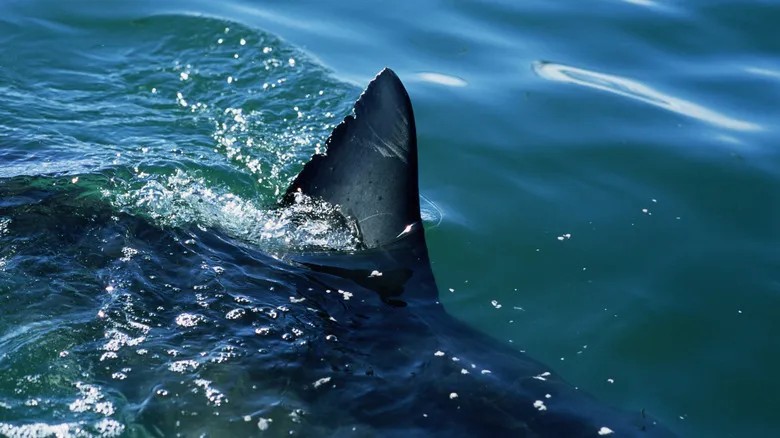
Regarded as a delicacy in various Asian cultures, shark fin soup is prepared using the fibrous material found within a shark's fin. While it may not seem appealing to everyone, many consider it the pinnacle of luxury cuisine. Although it's rare to find shark fin on menus in the United States, if you do encounter it at an upscale restaurant, it's wise to think carefully before ordering. This is due to the fact that the sale of shark fins is prohibited in certain states, and finning itself is illegal in U.S. waters.
Finning involves the brutal act of cutting off a shark's fins and discarding the body back into the ocean. The shark, left bleeding and unable to swim properly, is left to die. This practice is not only inhumane but also a significant factor contributing to the rapid decline of shark populations globally. In 2000, Congress enacted the Shark Finning Prohibition Act, which mandates that all fishermen must return sharks to shore with their fins attached. Additionally, states like California, Hawaii, and New York have gone further by completely banning the sale of shark fins.
10. Loon meat

If you've ever experienced the eerie call of a loon resonating across the surface of a tranquil lake, it's clear why this bird is often referred to as the "spirit of the north." These waterfowl also provided sustenance for Native Americans, who would hunt loons using spears and arrows or even catch them directly from the water with their hands. The loons were typically roasted, broiled, or boiled, and sometimes their meat was dried. Additionally, loon eggs were consumed.
Fortunately for loons, they are now a protected species. Under the Migratory Bird Treaty Act of 1918, hunting loons or selling their meat is prohibited. It might also be a blessing for us that loon meat isn't featured on any restaurant menus in the U.S., as many consider it quite unappetizing. In "Birds of America," John James Audubon noted, "The flesh of the loon is not very palatable, being tough, rank, and dark colored." This might not be surprising, given that loons primarily feed on fish, frogs, and insects.
11. Puffer fish
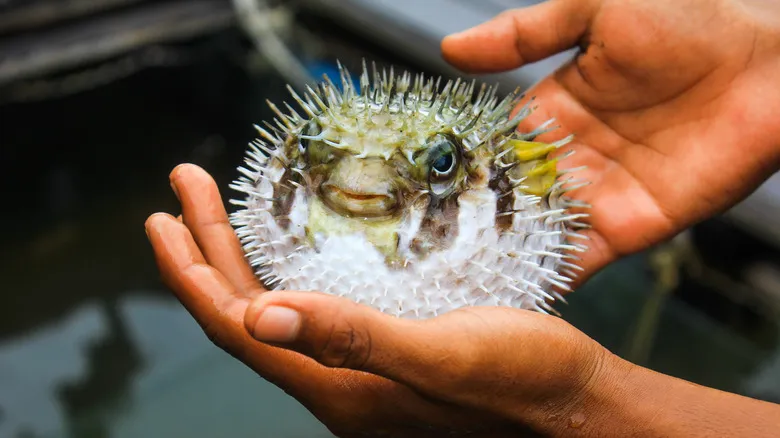
Puffer fish, also known as fugu, blowfish, or swellfish, is renowned in culinary circles. This unique fish is prized for its mild, slightly sweet flavor, as well as the thrill associated with consuming it. However, caution is essential, as puffer fish harbors a potentially deadly toxin called tetrodotoxin. This toxin is present in the fish's intestines, liver, gonads, and skin, necessitating meticulous preparation to avoid contaminating the edible flesh. A single misstep could lead to symptoms such as dizziness, speech difficulties, tingling in the extremities, and even respiratory failure, which can be fatal.
Tetrodotoxin is the primary reason fugu is difficult to find in the United States. In some states, like Florida, both commercial and recreational fishing of puffer fish is prohibited. Additionally, there are stringent regulations governing the importation of this fish into the country. According to the U.S. Food and Drug Administration, puffer fish can only be imported by a company named Wako International, which sources the fish from facilities licensed by the Japanese government. Individuals are not allowed to import puffer fish for personal or commercial use. If you're eager to try fugu, you may need to venture outside the U.S. to do so.
12. Ortolan meat

At first sight, the ortolan may not seem like a candidate for a lavish and decadent meal. This diminutive songbird weighs roughly an ounce and resembles a typical bunting or finch. Yet, this little bird has become a forbidden French delicacy, celebrated by celebrity chefs, food enthusiasts, and even politicians. It is a luxurious dish surrounded by tradition and controversy.
The conventional way to prepare ortolan involves force-feeding the birds grains and fruits until they are plump, then submerging them in a type of brandy known as Armagnac, plucking their feathers, and roasting them. Diners are encouraged to drape a napkin over their heads to enhance the experience of inhaling the aromas before consuming the bird whole. French chef Michel Guérard remarked to The New York Times, "To savor the flesh, the fat, and the tiny bones while hot, all at once, is like being transported to another realm."
Unfortunately, the high demand for this peculiar dish has led to a significant decline in ortolan populations. These birds are now classified as an endangered species, making hunting them illegal in both Europe and the United States. While chefs may advocate for their return to restaurant menus, for now, they remain both legally and literally off-limits.
13. Bat meat

Bats can be found in almost every part of the world, with the exception of a few extreme habitats. While these flying mammals might not appear to be a tempting dish, bat meat is regarded as a delicacy in various countries. For instance, fruit bat soup is a popular dish in Indonesia, Palau, and other regions of Micronesia. However, adventurous diners looking to sample bat meat will need to venture outside the United States, as many bat species are federally protected under the Endangered Species Act (ESA) of 1973 and the Fish and Wildlife Act of 1956.
Additionally, bats are classified as bushmeat, which is prohibited from being imported into the United States. Bushmeat refers to meat from wild animals such as bats, apes, monkeys, and rodents. The Centers for Disease Control and Prevention warns that these meats can harbor communicable diseases, including the lethal Ebola virus. Consequently, any bushmeat discovered at U.S. ports will be confiscated, and importers could face fines of up to $250,000. Furthermore, even native bats can transmit diseases like rabies, making them less than ideal for your next dinner gathering.
Recommended

Why Kinder Surprise Eggs Are Illegal In The United States

One Man Hated Manhattan Clam Chowder So Much He Tried To Make It Illegal In Maine

The Meteoric Rise, Fall, And Return Of Wonder Bread
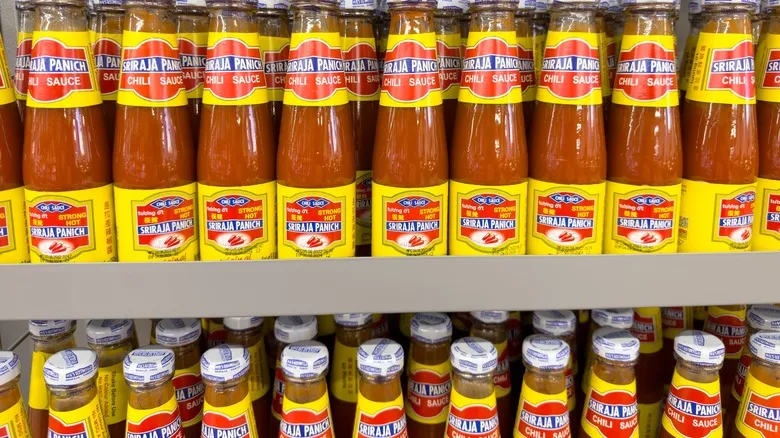
Why You've Probably Never Tasted The Original Sriracha
Next up

